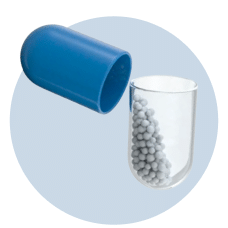Domdon Suspension
Your child’s medicine at a glance
Domdon Suspension is best given half an hour before each meal. If given after meals, it will still work but the absorption of the medicine may get affected. For young babies, the doctor may prescribe giving it four times each day. Wait for at least 4 hours between doses and give each dose just before a milk feed. The doses usually vary depending upon your child’s condition, body weight, and age. Never exceed the prescribed duration without consulting the doctor. If your child vomits within 30 minutes of the intake, repeat the same dose once your child calms down, but do not double dose if it is time for the next dose.
This medicine may cause some minor and temporary side effects such as dry mouth, headache, drowsiness, stomach cramps, and diarrhea. Usually, these episodes subside once your child’s body adapts to the medicine. However, if these side effects persist or become bothersome for your child, report to the doctor without any delay.
Your child’s doctor should be aware if your child has had any previous episodes of allergy, heart problem, a blood disorder, birth defects, airway obstruction, lung anomaly, gastrointestinal problem, skin disorder, liver impairment, and kidney malfunction. Being aware of your child’s entire medical history will help the doctor make critical dose alterations and plan your child’s overall treatment.
Uses of Domdon Suspension in children
Benefits of Domdon Suspension for your child
In Treatment of Indigestion
Take Domdon Suspension as prescribed by the doctor. Think about what foods trigger indigestion and try to avoid them; eat smaller, more frequent meals; try to lose weight if you are overweight, and try to find ways to relax. Do not eat within 3-4 hours of going to bed.
In Treatment of Gastroesophageal reflux disease (Acid reflux)
Side effects of Domdon Suspension in children
Common side effects of Domdon
- Dryness in mouth
- Headache
- Diarrhea
- Drowsiness
- Stomach cramp
How can I give Domdon Suspension to my child?
How Domdon Suspension works
Safety advice
Regular monitoring of renal function, particularly with long-term therapy, may be required.
Use of Domdon Suspension is not recommended in children with severe liver disease. Consult your child’s doctor before giving the medicine to your child.
What if I forget to give Domdon Suspension to my child?
All substitutes
Quick tips
- Domdon Suspension should be taken before meals as per the dose and duration prescribed by the doctor.
- Dry mouth may occur as a side effect. Frequent mouth rinses, good oral hygiene, increased water intake and sugarless candy may help.
- If needed, Domdon Suspension can be given along with fever medicines unless your child’s doctor has told you not to.
- Do not mix Domdon Suspension with any herbal or ayurvedic medicines as they can harm.
- Give Domdon Suspension for the current illness. Do not save medicines to treat future symptoms.
- If you are not sure a medicine is working, do not stop the medicine abruptly by yourself. Call your child’s doctor for advice. Meanwhile, continue with the medicine.
Fact Box
Interaction with drugs
Patient concerns
FAQs
What is the maximum dose of Domdon Suspension I can give to my child daily?
What if my child takes too much Domdon Suspension?
How should Domdon Suspension be stored?
Can other medicines be given at the same time as Domdon Suspension?
Related ayurvedic ingredients
Disclaimer:
Tata 1mg's sole intention is to ensure that its consumers get information that is expert-reviewed, accurate and trustworthy. However, the information contained herein should NOT be used as a substitute for the advice of a qualified physician. The information provided here is for informational purposes only. This may not cover everything about particular health conditions, lab tests, medicines, all possible side effects, drug interactions, warnings, alerts, etc. Please consult your doctor and discuss all your queries related to any disease or medicine. We intend to support, not replace, the doctor-patient relationship.References
- McQuaid KR. Drugs Used in the Treatment of Gastrointestinal Diseases. In: Katzung BG, Masters SB, Trevor AJ, editors. Basic and Clinical Pharmacology. 11th ed. New Delhi, India: Tata McGraw Hill Education Private Limited; 2009. p. 1078.
Marketer details
The list of available options shown with the same composition has been prepared upon the advice of registered medical practitioners, pharmacists affiliated with TATA 1MG. TATA 1MG does not promote any pharmaceutical product of any particular company, and all recommendations are based on the medical opinion, advisories from specialist medical and pharmaceutical professionals.
Lab tests offered by us













